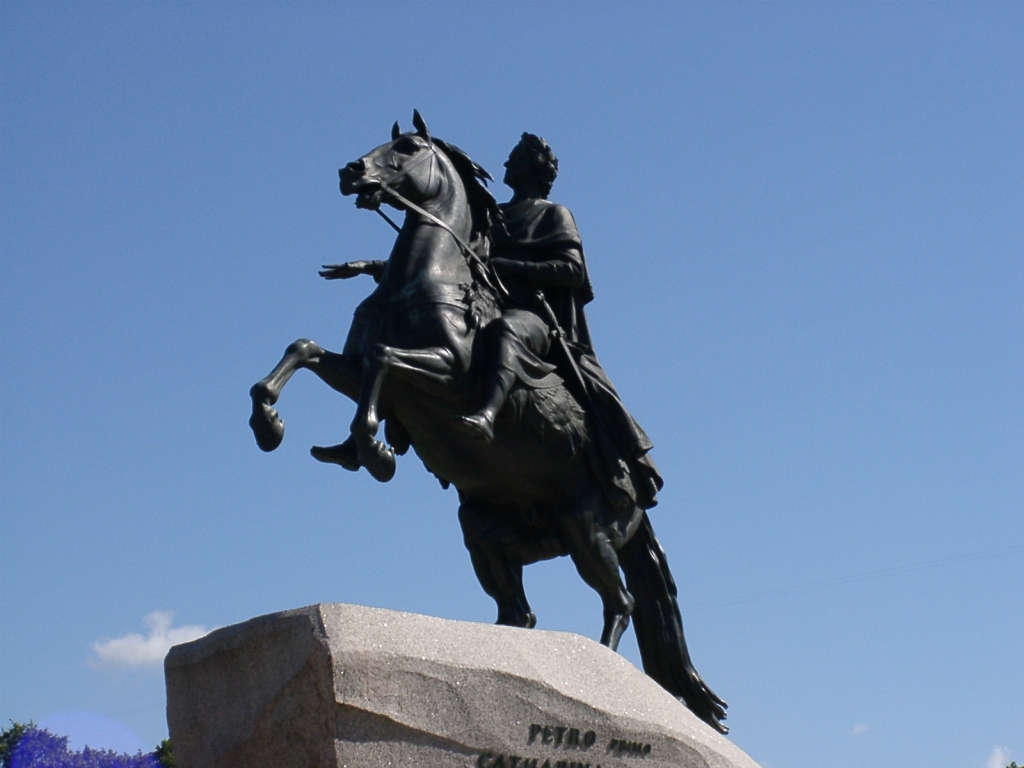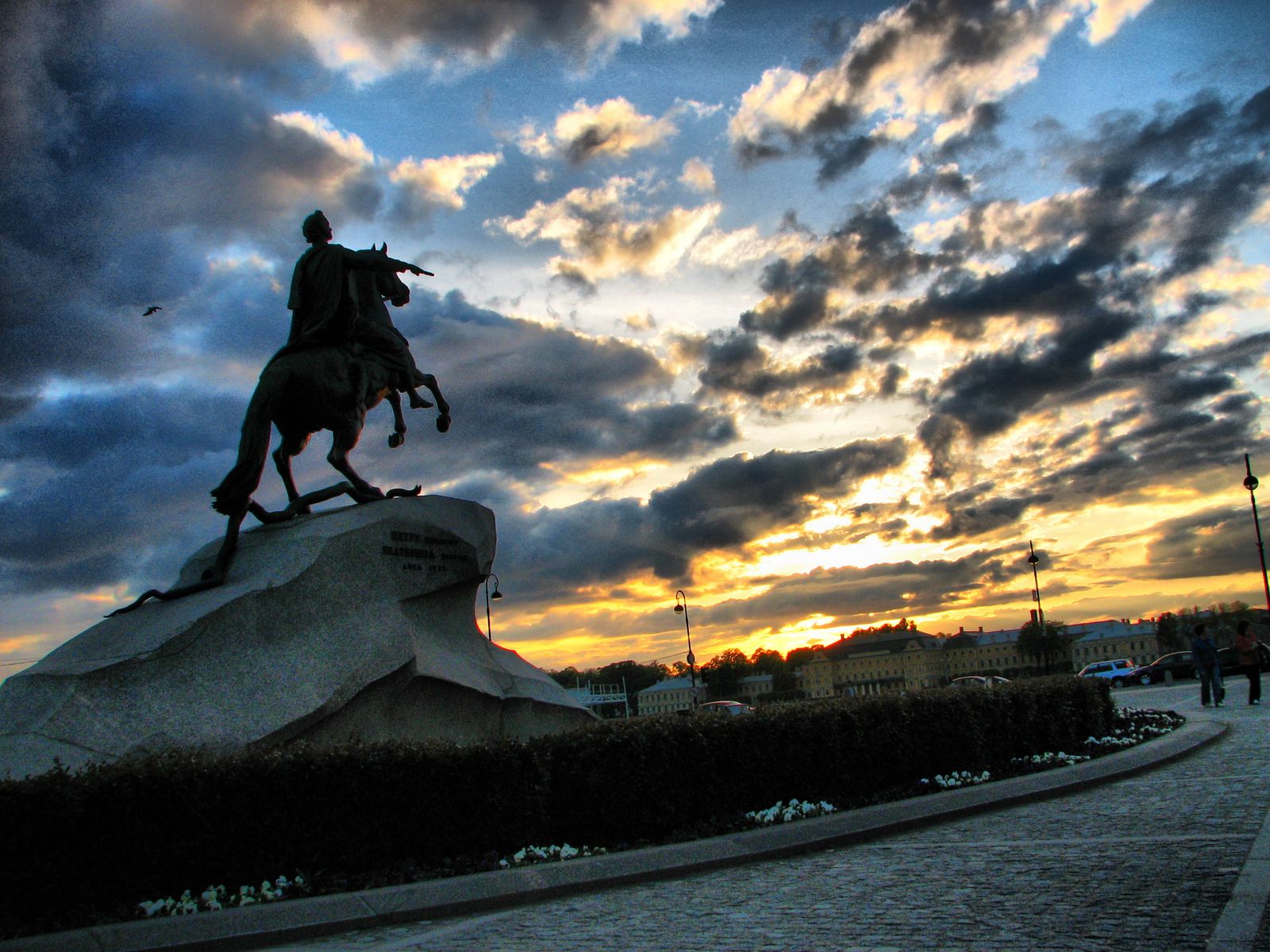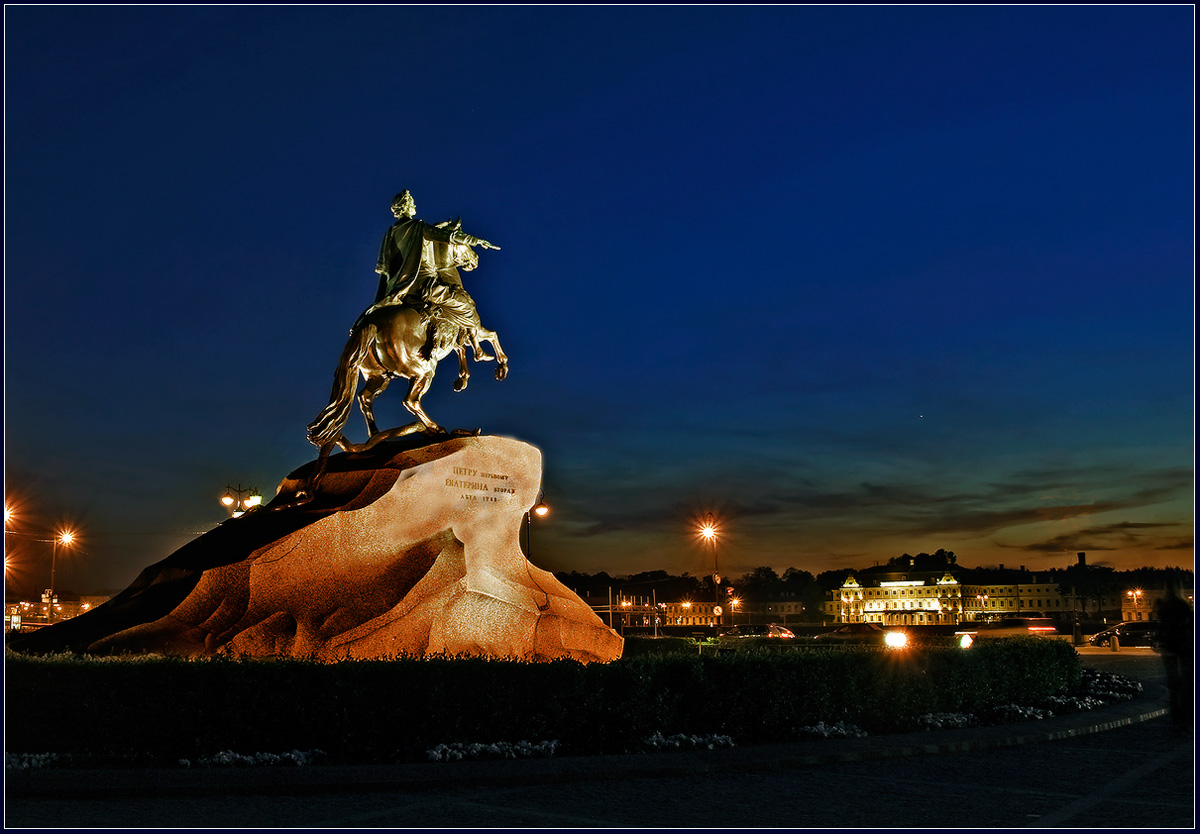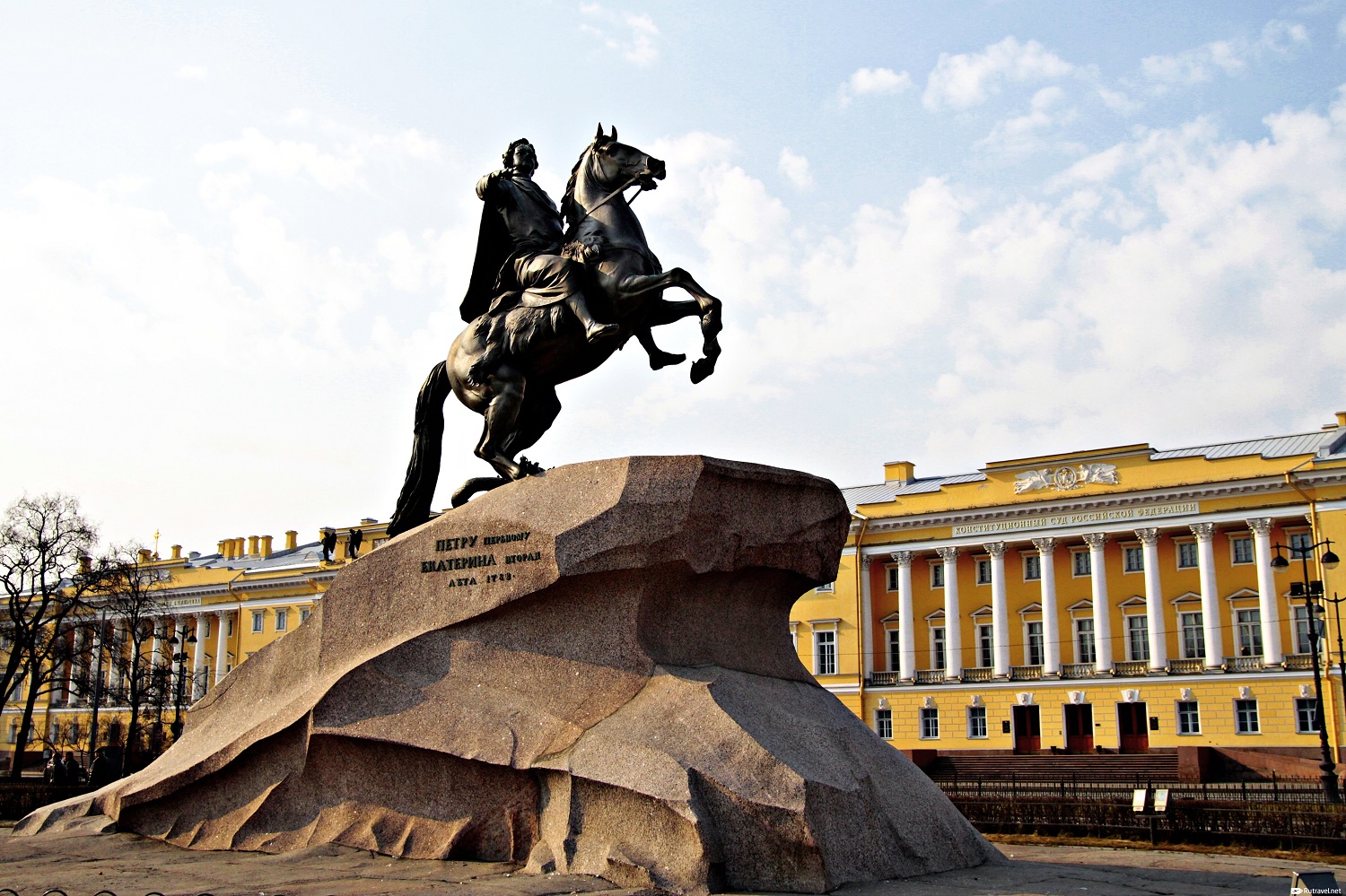The Bronze Horseman is an equestrian statue of Peter the Great in Saint Petersburg, Russia. Commissioned by Catherine the Great, it was created by the French sculptor Étienne Maurice Falconet. The name comes from an 1833 poem of the same the name by Aleksander Pushkin, which is widely considered one of the most significant works of Russian literature. The statue is now one of the symbols of Saint Petersburg, in much the same way that the Statue of Liberty is a symbol of New York City.
The statue's pedestal is the enormous Thunder Stone, the largest stone ever moved by humans. The stone originally weighed about 1500 tonnes, and was carved down to 1250 during transportation to its current site.
The equestrian statue of Peter the Great is situated in the Senate Square (formerly the Decembrists Square), in Saint Petersburg. Catherine the Great, a German princess who married into the Romanov line, was anxious to connect herself to Peter the Great to gain legitimacy in the eyes of the people.[2] She ordered its construction, and had it inscribed with the phrase Petro Primo Catharina Secunda MDCCLXXXII in Latin and Петру перьвому Екатерина вторая, лѣта 1782 in Russian, both meaning 'Catherine the Second to Peter the First, 1782', an expression of her admiration for her predecessor and her view of her own place in the line of great Russian rulers. Having gained her position through a palace coup, Catherine had no legal claim to the throne and wanted to represent herself as Peter's rightful heir.
In correspondence with Catherine the Great, Denis Diderot suggested French sculptor Étienne Maurice Falconet, a friend of his, for the commission. The empress followed his advice and Falconet arrived in Russia in 1766.
In 1775 the casting of the statue began, supervised by caster Emelyan Khailov. At one point during the casting, the mould broke, releasing molten bronze that started several fires. All the workers ran except Khailov, who risked his life to salvage the casting.[3] After being remelted and recast, the statue was later finished. It took 12 years, from 1770 to 1782, to create the Bronze Horseman, including pedestal, horse and rider.[citation needed]
The tsar's face is the work of the young Marie-Anne Collot, then only 18 years old. She had accompanied Falconet as an apprentice on his trip to Russia in 1766. A student of Falconet and Jean-Baptiste Lemoyne, Collot was called Mademoiselle Victoire (Miss Victory) by Diderot. She modelled Peter the Great's face on his death mask and numerous portraits she found in Saint Petersburg. The right hand of the statue was modelled from a Roman bronze hand, found in 1771 in Voorburg in the Netherlands at the site of the ancient Roman town Forum Hadriani.[citation needed]
Inauguration of the Monument to Peter the Great. Engraving by A. K. Melnikov of the drawing by A. P. Davydov, 1782
On 7 August 1782, fourteen years after excavation of the pedestal began, the finished statue was unveiled in a ceremony with thousands in attendance. Conspicuously absent was Falconet, as a misunderstanding between him and the empress turned into a serious conflict. As a result he was forced to leave Russia four years before the project was completed. Catherine largely forgot about him afterwards, and came to see the Bronze Horseman as her own oeuvre.
The statue portrays Peter the Great sitting heroically on his horse, his outstretched arm pointing towards the River Neva in the west. The sculptor wished to capture the exact moment of his horse rearing at the edge of a dramatic cliff. His horse can be seen trampling a serpent, variously interpreted to represent treachery, evil, or the enemies of Peter and his reforms. The statue itself is about 6 m (20 feet) tall, while the pedestal is another 7 m (25 feet) tall, for a total of approximately 13 m (45 feet).













